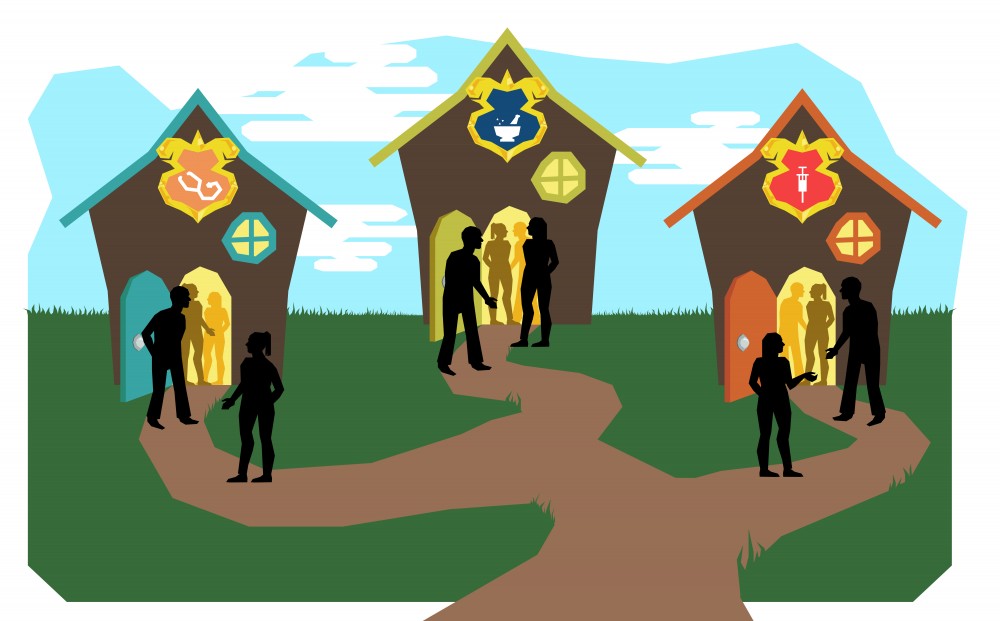The University of Minnesota Medical School created an experimental house system for students this fall.
The system is divided into three houses, or learning communities, temporarily named after University-created apples. When students enter the houses at the start of medical school, they can access advisers and ask questions, interact with other medical students and feel a sense of community.
“For the medical school and for the students in particular, we’re really looking to promote a greater sense of community and connection,” said Scott Slattery, director of the Office of Learner Development in the Medical School.
The short-term names of the houses are Zestar!, Beacon and Centennial. Students are divided into each of these houses by their academic or faculty adviser, and they will stay in the house for the duration of their time in medical school, Slattery said.
Before the houses existed, students often didn’t know where to go with their questions, Slattery said. Students will now know where to go, and advisers will be able to communicate with them more efficiently.
“If there’s an issue that a student might encounter, it is feeling at times that they’re isolated on their own,” he said of the last two years of medical school.
This is the pilot year of the house system. It will be launched formally in fall 2020, Slattery said.
The primary driver of this house system is improving student experience, Slattery said.
“When you do feel more connected,” he said, “it does help to mitigate or lessen that sense of stress or burden.”
Maggie Plattes, a second-year medical student, has been involved in the creation of this system for almost a year because of her interest in mental health.
“People will tell you about physical burnout, but medical student burnout isn’t so much a thing,” she said. “It’d be nice to have students not be burned out before they even become physician.”
While the house system is in development this year, they hope to alleviate some of the medical student stressors, Plattes said. One main stressor is feeling isolated from one’s peers.
“Looking at this idea of if we can focus our attention and energy on this idea of creating these communities so we’re preventing these symptoms from happening, as opposed to reacting,” she said. “That is obviously ideal because we don’t want students to ever feel that way.”
Plattes said she hopes the program can figure out different roles for each house. Ideally, each house will be staffed with peer mentors, a well-being committee, tutoring opportunities and a confidential peer assistance program.
“We are very confident that this is going to work, we just haven’t figured out all the logistics,” Slattery said. “We want to cover different elements of the student’s life.”
These houses aren’t just for Twin Cities campus students, but are transitioning Duluth students, too.
Duluth students spend their first two pre-clinical years of medical school on the Duluth campus, where they learn clinical skills. Students then have to finish their last two years of medical school at the Twin Cities campus, using those skills in clinical settings, said Robin Michaels, associate dean of student life and academic affairs on the University of Minnesota-Duluth campus.
Michaels said it’s difficult for students to transition from the Duluth campus to the Twin Cities.
“It’s harder for them to transition to a bigger city,” she said.
Medical students already have small learning communities on the Duluth campus, Michaels said. When they transition to the Twin Cities campus houses, they’re able to stay with those same learning communities.
“This is a way to, I think, really help in the transition process for students coming to a different campus,” she said.
Correction: A previous version of this article incorrectly stated that the new house system is only for third-year medical students. It is for all medical students.








